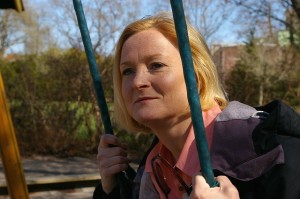- Calls to this hotline are currently being directed to Within Health, Fay or Eating Disorder Solutions
- Representatives are standing by 24/7 to help answer your questions
- All calls are confidential and HIPAA compliant
- There is no obligation or cost to call
- Eating Disorder Hope does not receive any commissions or fees dependent upon which provider you select
- Additional treatment providers are located on our directory or samhsa.gov
Bulimia Nervosa in the Middle-Aged Adult

A man wasn’t feeling well, left work early, and came home to his wife of many years. He quietly unlocked the door to find his wife vomiting in the powder room sink. She had been doing this before they began their marriage 30 years ago. Now she is one of the growing groups of middle-aged adults with bulimia.
She denied the problem, too scared – mostly scared of herself – to admit she was one of the middle-aged adults with bulimia. This story, sadly, isn’t unusual.
Middle-Aged Adults with Bulimia – A Hidden Epidemic
New statistics reveal that thousands of middle-aged women are suffering from eating disorders stemming from childhood unhappiness, sexual abuse, divorce, financial problems, and bereavement in mid-life.
The new study, conducted by University College London, interviewed 5,300 women in Britain in their 40s and 50s, discovering that 15 percent had suffered an eating disorder at some point in their life, and three percent within the past year.
Contrastingly, almost one in 100 women between 15 and 30 have been diagnosed with an eating condition, although many more may be suffering in silence.
This study is the first of its kind to investigate the prevalence in a population of women in the fifth and sixth decade of life, effectively illustrating that eating disorders are not limited to youth.[5]
Eating Disorders Are Not Only a Disease of the Young

It is widely believed that eating disorders are a disease of the young, and many young people do suffer from anorexia, bulimia and binge eating disorder.
However, the young grow up, and as they do, of those with eating disorders only 50 percent report they have recovered, according to research from the National Association of Anorexia Nervosa and Related Disorders (ANAD).
“Many of the women who took part in this study told us this was the first time they had ever spoken about their eating difficulties, so we need to understand why many women did not seek help,” said lead author Dr Nadia Micali, from UCL and the Department of Psychiatry at Icahn School of Medicine at Mount Sinai, New York.
“It may be that there are some barriers women perceive in healthcare access or a lack of awareness among healthcare professionals.”
Adults suffering from eating disorders fall into three categories [1]:
- They’ve had it for decades, the most common scenario.
- They recovered, and for various reasons, the eating disorder resurfaced.
- They just developed the eating disorder later in life.
Middle-Aged Adults with Bulimia and Eating Disorders Are Increasing
We’d all like to think eating disorders stop after adulthood, but statistics show us this isn’t the case. The Renfrew Center, a renowned eating disorder treatment center in Pennsylvania and other locations, reports intakes of middle-aged adults with bulimia or other eating disorders have increased by 42 percent between 2001 and 2010. [2]
Reality is women in their middle and old age continue to struggle with body image and body acceptance. A study published in the International Journal of Eating Disorders surveyed almost 2,000 women ages 50 and older. [3]
More than 70 percent of them were currently trying to lose weight, and 80 percent said their weight and body shape influenced their self-image.

More than 10 percent of these women had signs of an eating disorder.
This is crucial information because there are 53 million women, age 50 and older in the United States.
The lead researcher of this study, Cynthia Bulik, a distinguished professor of eating disorders at the University of North Carolina, Center of Excellence for Eating Disorders, compares menopause to puberty saying women go through monumental physical and emotional changes.
Post-menopausal women have hormone changes and tend to gain weight, and they’re experiencing this against the canvas of a society that reveres youth and beauty.
Midlife Is a Time of Change Where Eating Disorders Surface
Midlife is also a time of transitions. These adults aren’t entering high school or going off to college – a common time for eating disorders to begin – but they’re watching their children do these things.
They’re readjusting to a marriage without children in the house. They’re watching their parents grow old. Midlife crisis isn’t a conceptual fluke.
Once we acknowledge that middle-aged adults can struggle with eating disorders, we need to learn how to help them. Many middle-aged people avoid eating disorder treatment because it normally caters to younger people.
Older adults may feel ashamed to be dealing with bulimia in this phase of their life, but we must let them know it’s not unusual, even if society hasn’t yet learned this.
Research shows early intervention of eating anorexia, bulimia and binge eating disorder improves odds for recovery. Treating adults who have had chronic bulimia and other eating disorders may be difficult because the behaviors become so ingrained.
On the other hand, middle-aged adults with eating disorders oftentimes are mothers, fathers, husbands, wives, employees – people depend upon them. Their recovery not only helps them feel better but benefits all who depend upon them.
Personal Responsibilities may Prevent Adults from Seeking Treatment
Another challenge for adults entering treatment are the personal responsibilities young people may not have, like a full-time job, a home, and maybe children for whom to care.
Fortunately, there are many treatment options aside from inpatient if individuals are healthy enough to stay at home.
They include partial hospitalization (nonresidential treatment for about 8 hours each weekday); intensive outpatient (nonresidential treatment a few full days a week or partial days all week); and an outside treatment team (arranging regular visits with a private therapist, dietetic, and any other needed professionals).
Middle-aged Bodies Are Less Resilient to Eating Disorders

What cannot be ignored is that eating disorders are the deadliest mental illness.
The illness abuses our bodies, stretches our physical selves to dangerous limits.
Younger bodies can handle the torment better than older ones because they’re simply more resilient.
Starvation, binge eating and purging all impact the heart and gastrointestinal systems. Unsettled eating patterns can cause hormone imbalances that can lead to osteoporosis.
Repeated vomiting and malnutrition damage teeth, too. These problems hit harder and faster as people get older, and their bodies become less resilient.
In fact, senior women comprise 78 percent of all deaths caused by anorexia, and 69 is the average age women die from the disease. [4]
Though disheartening, these statistics allow us to help those for too long hidden behind the curtains. It is an opportunity to provide them with hope and recovery.
Growing awareness of middle-aged adults with bulimia or other eating disorders is also facilitating the widening of treatment options to be more inclusive and effective. It is never too late to get the help you deserve.
References:
[1]: Schaeffer, J. (n.d.). Elder Eating Disorders: Surprising New Challenge. Retrieved December 15, 2015. [2]: Middle-Aged Women and Eating Disorders – The Breast Care Site. (2013, February 14). Retrieved December 15, 2015. [3]: Gagne, D., Von Holle, A., Brownley, K., Runfola, C., Hofmeier, S., Branch, K. & Bulik, C., (2012). Eating disorder symptoms and weight and shape concerns in a large web-based convenience sample of women ages 50 and above: Results of the gender and body image (GABI) study. International Journal of Eating Disorders, 45: 832–844. [4]: Middle-Aged Women and Eating Disorders – The Breast Care Site. (2013, February 14). Retrieved December 15, 2015. [5]: Knapton, S. (2017, January 17). Study uncovers hidden epidemic of eating disorders in middle-aged women. Retrieved from https://www.telegraph.co.uk/news/2017/01/17/study-uncovers-hidden-epidemic-eating-disorders-middle-aged/About the Author:

Leigh Bell holds a Bachelor of Arts in English with minors in Creative Writing and French from Loyola Marymount University in Los Angeles. She is a published author and journalist with 15 years of experience, and a recipient of the Rosalynn Carter Fellowship for Mental Health Journalism. Leigh is recovered from a near-fatal, decade-long battle with anorexia and the mother of three young, rambunctious children.
References
[1]: Schaeffer, J. (n.d.). Elder Eating Disorders: Surprising New Challenge. Retrieved December 15, 2015.[2]: Middle-Aged Women and Eating Disorders – The Breast Care Site. (2013, February 14). Retrieved December 15, 2015.
[3]: Gagne, D., Von Holle, A., Brownley, K., Runfola, C., Hofmeier, S., Branch, K. & Bulik, C., (2012). Eating disorder symptoms and weight and shape concerns in a large web-based convenience sample of women ages 50 and above: Results of the gender and body image (GABI) study. International Journal of Eating Disorders, 45: 832–844.
[4]: Middle-Aged Women and Eating Disorders – The Breast Care Site. (2013, February 14). Retrieved December 15, 2015.
The opinions and views of our guest contributors are shared to provide a broad perspective of eating disorders. These are not necessarily the views of Eating Disorder Hope, but an effort to offer a discussion of various issues by different concerned individuals.
We at Eating Disorder Hope understand that eating disorders result from a combination of environmental and genetic factors. If you or a loved one are suffering from an eating disorder, please know that there is hope for you, and seek immediate professional help.
Reviewed & Updated on September 6, 2019, by Jacquelyn Ekern MS, LPC
Originally Published January 25, 2016, on EatingDisorderHope.com
Current version updated with statistics, recent research & video.

The EatingDisorderHope.com editorial team comprises experienced writers, editors, and medical reviewers specializing in eating disorders, treatment, and mental and behavioral health.

